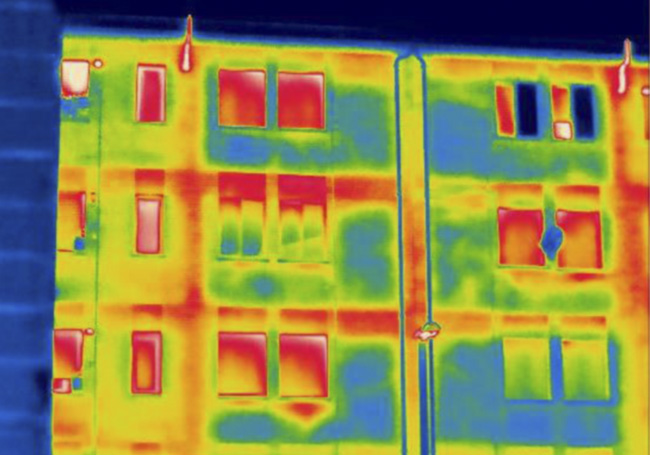A study by the UPV/EHU’s ENEDI (Energy in Building) research group has concluded that most of the countries in Southern Europe are ill-prepared when it comes to implementing nearly zero-energy buildings, and in particular, when addressing the challenge to modernise existing buildings, and has proposed improvements for the development of future buildings.
Nearly zero-energy buildings: a difficult challenge for Southern Europe
Researchers at the UPV/EHU-University of the Basque Country have analysed the building situation in countries in southern Europe
- Research
First publication date: 19/12/2017

Over the coming years there is a legal commitment for all the countries of Europe to improve the energy efficiency of buildings, which boils down to constructing nearly zero-energy buildings (nZEBs), in other words, buildings that consume the minimum of energy. The EU Directive 31/2010 establishes two key deadlines: that all public buildings must be nZEBs as from 1 January, 2019, and two years later, by 1 January 2021, all new buildings must be nZEBs. “It is only 1 year until the first commitment and yet many countries are a long way from meeting this level of energy efficiency in buildings. The countries that have made the most progress in this challenge are the ones in central and northern Europe,” explained Juan María Hidalgo, co-author of the study.
This research led by the Université de Liege was carried out by over a dozen European researchers and analyses the construction situation in seven countries in Southern Europe (Cyprus, France, Greece, Italy, Portugal, Romania and Spain). Each country has subtle differences in the technical definitions that make it very difficult to directly compare the nZEB regulations and impulse programmes. That is why “we participants in the study made an effort to reach agreement on a common methodology. It was the only way of making real comparisons on a like-for-like basis,” added Hidalgo.
Social and technological barriers
The research focussed on the comparison of the social and technological barriers hampering the development of nZEBs, with respect to both new buildings and the retrofitting of existing properties. Until now many studies justified the south-north delays by citing the economic context. Yet this work has shown that there are other barriers, such as sociological ones and the climate conditions of each country that greatly affect the achieving of the aims of nearly zero-energy buildings. “The poor training of practically all the players, starting with the administration, including construction workers, and going right up to citizens, constitutes a huge human chain in which there is still a lack of understanding about what nZEBs are and how to achieve them,” stressed Hidalgo. Yet “building design has to be studied in greater detail to resolve the changes of season such as winter and summer, etc.”, added Hidalgo. “The Basque Country could be a good test bench for that as it has nearly the whole range of climates in the study. Despite being a small region, we have to apply very different design criteria in coastal areas, mountainous areas, areas in the south, etc.”
“If these barriers are not overcome, there will very likely be dissatisfaction with the actual result, since problems of thermal comfort, overheating, unnecessary additional costs in the building, etc. could arise, often exacerbated by the poor functioning of the buildings,” said the researcher. So “the study is proposing improvements in the regulations, design, construction and use for buildings of this type,” he added.
The researcher also stressed that because of the location and orientation possibilities, the use of new materials and technologies integrated into the design, it is more difficult to build a new nZEB than to transfer this concept to the sphere of retrofitting, since there is less room for manoeuvre and the costs also rise.
Juan María Hidalgo says “we are hoping that this study will help to solve the main difficulties in the sector and enable us to get to 2020 with a better-prepared building sector, with better tools and greater awareness”. That way “it will be possible to build nZEBs that meet the needs of everyone, at the lowest cost and with the least environmental impact possible”.
Bibliographic reference
- Overview and future challenges of nearly zero energy buildings (nZEB) design in Southern Europe
- Energy and Buildings. Vol. 155. November 2017. Pages 439-458
- DOI: 10.1016/j.enbuild.2017.09.043









